Acceptable sizes of heating radiators: so that they heat perfectly and fit well into the interior

Dimensions radiators determine amount of coolant, which they are able to accommodate.
This determines the power of heating batteries.
Standard sizes of heating batteries
IN GOST 26645-85 Tolerances with nominal intervals are described.
The radiator has three linear dimensions responsible for the volume of the section.
Width: thin or thick
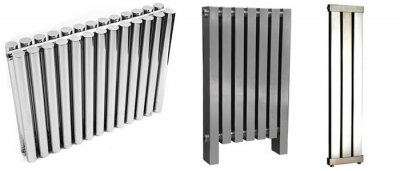
This is the distance between the outer walls of the battery. Quite a variable indicator.
The depth is usually 75-140 mm, depending on the material and manufacturer.
In rare cases, larger items are found.
Length
Visually - length. This is the interval from the left to the right side wall. The indicator is taken equal to 80 mm when creating order 95% of devices. In other cases, a little more, maximum - 88 mm. Any other radiators are made to order. This does not apply to cast iron devices: they are wider.
Minimum height

The most variable value, which represents the vertical component of the section.
It usually consists of 380-420 or 540-580 mm.
There are special types of batteries whose length is in the range from two to three meters.
Similar devices are placed in bathrooms.
Important! Axial distance is often mentioned. This is the distance between the connection points of the supply and return pipes. Standard dimensions are: 350 and 500 mm. But there are also other options, especially among aluminum products.
How to choose the right size of radiator sections
Determining the dimensions of sections and their quantity — the most important step in the creation of a classical heating system.
With standard arrangement

The power they can develop depends on the size of the batteries and the material they are made of.
The length is almost always the same and is 80 mm. First, the height is determined. To do this, the installation location is selected, which determines the available space.
And design also plays a big role. The vertical component is determined by these parameters. Usually, they decide between 350 and 500 millimeters.
Depending on the characteristics of the premises, you can purchase devices from 200 mm. If the radiator is purchased for a toilet or bathroom, a narrow model is recommended, capable of completely covering the space between the floor and the ceiling. High-rise devices have different variations from one and a half to three meters.
Having determined two linear characteristics and material, proceed to calculating the depth and number of sections. The number of the latter is usually taken equal to 10, but there are others. Thickness is found from volume. The cubic value is divided by length and height. Determining the power is also closely related to these indicators: knowing the required one, you can find the number of sections.
With an original interior
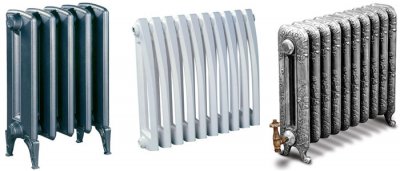
To create a design, manufacturers often sacrifice technical characteristics.
First of all this applies to cast iron products. Domestic radiators look serious, but are simply covered with paint.
European ones are more elegant, but weaker in heating. In any case, it is necessary to find out from the documentation about the power that they are capable of developing, since devices should be selected based on heat transfer.
Reference! There are batteries in the "retro" style. They have a nice appearance, but are expensive.
Aluminum have the same shape, except for custom-made ones, but differ in a variety of colors. In addition, a wide range of sizes helps to fit them into almost any part of the room.
Bimetallic radiators, unlike their analogues, are made not only straight, but also curved. Due to this, they look good in rooms with smooth angles.
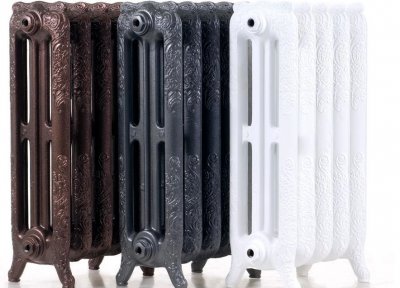
Regardless of the material chosen, before purchasing, you should read the technical documentation and find out the dimensions of the internal parts of the sections that contain the coolant.
This will help you decide on batteries not only by their external characteristics, but also by their heating capacity.
It follows remember the possibility of combinations. So, if a certain device is suitable in design, but its power is not enough, you can install additional heating, hiding it behind the side panel. Or combine radiator heating with warm floors.
A good option for guest rooms will become fireplace installation. Although the latter often plays a decorative role, it can also reduce the number or size of sections installed in the room. Sometimes it is better to sacrifice beauty than to freeze every winter.
If you have a desire create a special design, you should contact the battery manufacturers. They will help you make the calculations. Thanks to this, the finished product will look beautiful and perform its intended function.
What sizes are there?
Radiators are available in the following sizes.
Cast iron
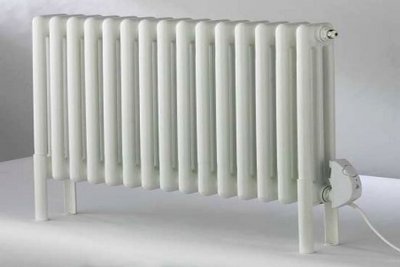
According to the specification, standard dimensions are:
- Width - 93 or 108 mm.
- Depth from 85 to 140 in increments of 5.
- Height - 588.
Custom made sections can be made to almost any size.
Knowing the length, the dimensions of the assembled device are determined, since a paronite gasket is placed between the parts. 1 cm thick.
If installation is carried out at a point with insufficient space, the size of the flushing tap is added.
Important! The distance between the axles is usually 500 mm. Small batteries with size 350 are rare.
Each section is capable of producing from 160 W, if the average daily temperature of the air and the coolant differs by 70 degrees. Cast iron can withstand working pressure up to 9 atm.
Aluminum
Different models have similar internal dimensions. The width ist 80 or 88 mm. The depth varies in the range 10—90 mm. The height is 50 or 35 cm. Bathroom models reach three meters long.
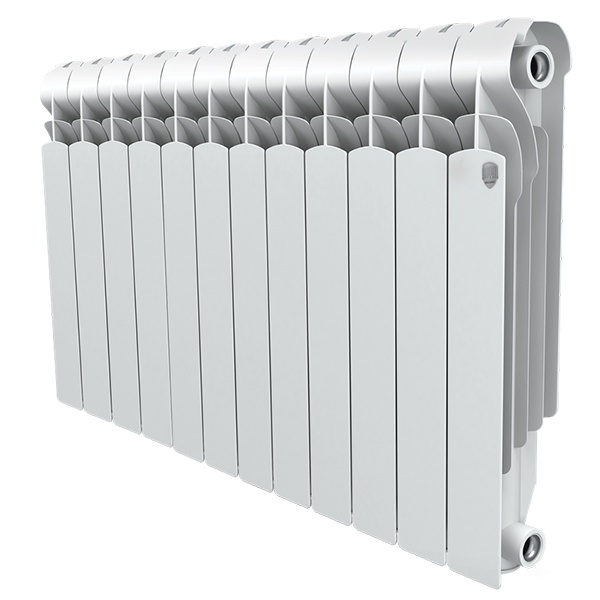
Photo 1. Aluminum radiator model Indigo 500/100 with side connection, section power 196 W, manufacturer - "Royal-Thermo", Russia.
The power of the sections depends not only on the dimensions, but also on the ribbing of the structure. Low ones develop 150-170 watts, A 500 mm — 185—220. Aluminum can withstand almost twice the pressure of cast iron.
Bimetallic
Standard values are in the ranges:
- Width 80—82 mm.
- Depth 75-100.
- Height 400-420, 550-580.
Power depends on the dimensions, but rarely exceeds 200 watts. This type of section is known for its ability to withstand high pressure, which is due to the steel core. The working value reaches up to 30 atm, and the test one is 50.
Useful video
Watch the video to learn how to choose the size and material of your heating radiators.
What will make the choice easier?
Selecting radiators by size is a complex process. To do this, you need perform calculations and focus on them. It is recommended invite specialists on heating, who can help with calculations.








